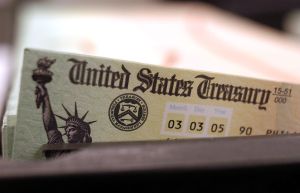The SpaceX Dragon commercial cargo ship returned to Earth on Sunday.
The Dragon landed in the Pacific Ocean, almost 300 miles west of Baja California, only five hours after it left the International Space Station at 9:26 a.m. EDT, according to USA Today.
"Welcome home, Dragon!" SpaceX said on Twitter.
The cargo ship was released by Steve Swanson, NASA astronaut and station commander, who controlled a 58-foot robotic arm that pulled the ship from its Harmony node. The capsule was then released into space 266 miles over the ocean, south of Australia, USA Today reported.
"Thanks to everybody who worked this Dragon mission; it went very well," Swanson radioed to the ground. "It's also very nice to have a vehicle that can take your science equipment, and maybe someday even humans, back to Earth."
2.5 tons of supplies were unloaded by the six-person international crew from the U.S., Russia and Japan on Expeditions 39 and 40, Universe Today reported.
The 3,500 pounds of equipment onboard the Dragon included spacewalk equipment, science samples from human research, vehicle hardware, biology and biotechnology studies, as well as physical science investigations and education activities.
"The space station is our springboard to deep space and the science samples returned to Earth are critical to improving our knowledge of how space affects humans who live and work there for long durations," said William Gerstenmaier, associate administrator for human exploration and operations. "Now that Dragon has returned, scientists can complete their analyses, so we can see how results may impact future human space exploration or provide direct benefits to people on Earth."
The Dragon launched on April 18 and arrived at the orbiting lab on April 20, USA Today reported. The ship is the only supply vessel that is currently able to return items to Earth, while cargo ships from different countries, along with Orbital Science Corp.'s Cygnus, were destroyed during reentry.
The April mission was SpaceX's third of at least 12 under a $1.6 billion resupply contract with NASA, with the fourth scheduled for launch in August.
© 2025 HNGN, All rights reserved. Do not reproduce without permission.








